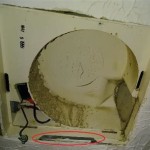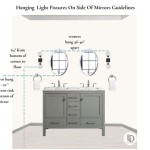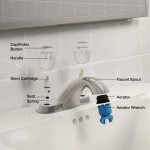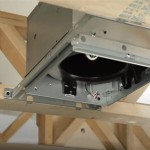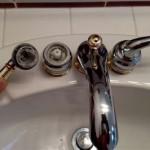How To Fix Moldy Drywall in a Bathroom
Mold growth in a bathroom is a common issue, often stemming from moisture buildup caused by showers, baths, or even just steam from hot water. If left untreated, mold can damage drywall, leading to structural issues and posing health risks. This article provides a comprehensive guide to identifying mold, addressing the source of moisture, and effectively repairing damaged drywall.
Identifying Mold Growth
The first step is to determine if the discoloration on your bathroom drywall is indeed mold. While it can be tricky to distinguish mold from other stains, here are some telltale signs:
-
Appearance:
Mold typically presents as dark patches, often black, green, or gray. It can appear fuzzy, powdery, or slimy. -
Smell:
Mold has a characteristic musty, earthy odor. -
Location:
Mold often appears in areas with high humidity, such as around showers, tubs, and sinks.
If you suspect mold, it's essential to take precautions to avoid inhaling spores. Wear a mask, gloves, and protective eyewear, and ensure proper ventilation. If you're unsure, contact a professional mold inspector for a definitive diagnosis.
Addressing the Source of Moisture
Before tackling the damaged drywall, it's crucial to address the root cause of the moisture problem. This will prevent mold from recurring and ensure a successful repair.
Common Causes of Bathroom Moisture
-
Poor Ventilation:
Inadequate ventilation allows moisture to linger, creating ideal conditions for mold growth. -
Leaking Pipes:
Leaking pipes are a major culprit, as they introduce consistent moisture into the wall cavity. -
Shower/Tub Splashes:
Water splashing outside the shower or tub can saturate the surrounding drywall. -
Condensation:
Warm, humid air from showers condenses on cool surfaces, leading to moisture buildup.
Solutions to Reduce Moisture
-
Improve Ventilation:
Ensure your bathroom has a properly functioning exhaust fan. Run the fan during and after showers to remove steam and moisture. -
Repair Leaks:
Immediately repair any leaks in pipes or fixtures. This may involve calling a plumber. -
Careful Showering Practices:
Minimize splashing by using a shower curtain or door and wiping down surfaces after use. -
Use a Dehumidifier:
If necessary, employ a dehumidifier to reduce excessive humidity levels in the bathroom.
Repairing Moldy Drywall
Once you've addressed the source of moisture, you can begin repairing the damaged drywall. The extent of the damage will determine the necessary steps:
Minor Mold Growth
For small areas of mold, you can clean and disinfect the affected area:
-
Remove Mold:
Carefully scrape away the mold with a putty knife or other tool. Wear a mask, gloves, and protective eyewear. -
Clean and Disinfect:
Apply a mold-killing solution like bleach or a commercial mold remover. Be sure to follow the manufacturer's instructions. -
Dry Thoroughly:
Allow the area to dry completely before proceeding. -
Apply Primer:
Apply a mold-resistant primer to seal and prevent future growth. -
Paint:
Finish with a mildew-resistant paint.
Significant Mold Growth or Damage
Extensive mold growth or damaged drywall requires a more involved repair process:
-
Cut Out Damaged Drywall:
Remove the affected drywall section, taking care to cut back to undamaged areas. -
Treat the Framing:
Apply a mold-killing solution to the exposed framing and allow it to dry fully. -
Replace Drywall:
Install a new piece of drywall, ensuring it fits securely and is flush with the surrounding wall. -
Tape and Mud:
Use joint compound to fill the seams and ensure a smooth finish. -
Prime and Paint:
Apply a mold-resistant primer and paint to complete the repair.
If you're unsure about the extent of the damage or the repair process, it's always best to consult with a professional contractor for guidance and assistance.
Remember, addressing mold in a bathroom is crucial for maintaining a healthy environment and preventing further damage. By understanding the causes, implementing preventative measures, and following the proper repair techniques, you can effectively eliminate mold and restore your bathroom to its pristine condition.

Black Mold In Bathroom How To Fix Damaged Drywall Doityourself Com Community Forums

Black Mold Removal And Prevention In Bathroom

I Found Mold In The Bathroom What Should Do

Bathroom Ceiling Mold Removal When To Clean Call Branch Environmental

How To Remove Mold From Walls True Value

How To Repair Ling Drywall In The Bathroom Casa Watkins Living

The Ultimate Guide On How To Clean Mold Drywall

Mold In The Shower Causes How To Clean It Environix

How To Get Rid Of Black Mold In Bathrooms

Repair Caulk Grout And Drywall In A Weekend
Related Posts

